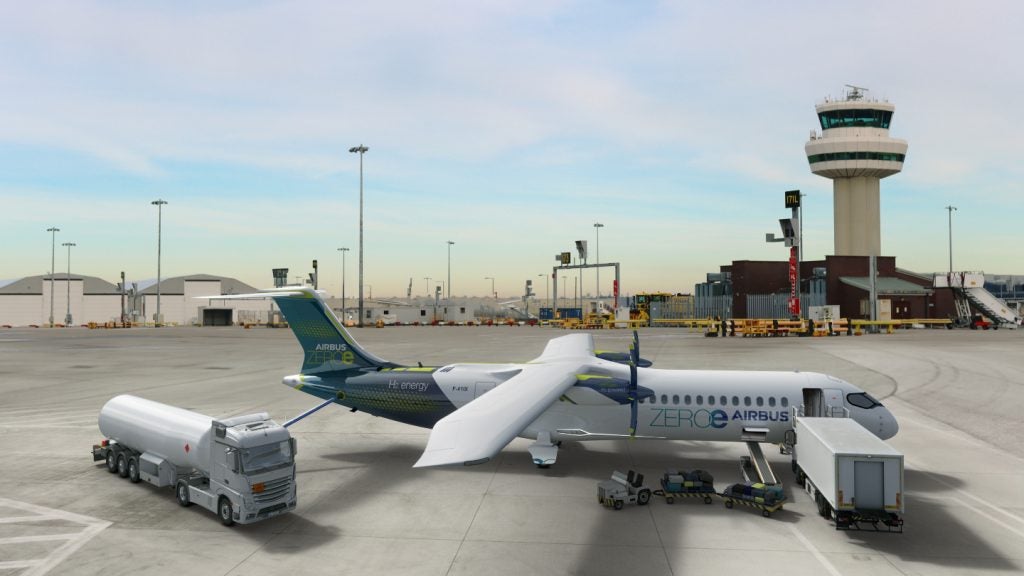
As Joe Biden is no doubt aware, a year is a long time in politics. In the 12 months since he squeezed past Donald Trump in the 2020 presidential election, the 46th US president has struggled to unite an electorate driven by mistrust and tribalism, and ‘build back better’ in the wake of the Covid-19 pandemic.
On the global stage, the controversial withdrawal of US troops from Afghanistan, the climate change emergency, and the ongoing trade war with China have dominated Biden’s foreign policy agenda.
The latter issue made headlines again in September when US Commerce Secretary Gina Raimondo accused the Chinese government of preventing its domestic airlines from buying significant numbers of US-manufactured Boeing aircraft as part of a trade deal in 2020 with the previous administration.
“There’s tens of billions of dollars of planes that Chinese airlines want to buy, but the Chinese government is standing in the way,” Raimondo was quoted by Reuters as saying following a Q&A session after a speech in Washington.
In a subsequent radio interview, Raimondo confirmed she was referring to China’s blocking of Boeing aeroplane purchases. “The Chinese need to play by the rules. We need to hold their feet to the fire and hold them accountable,” she said. On the same day, Boeing shares fell 2.6% to $218.41.
How well do you really know your competitors?
Access the most comprehensive Company Profiles on the market, powered by GlobalData. Save hours of research. Gain competitive edge.

Thank you!
Your download email will arrive shortly
Not ready to buy yet? Download a free sample
We are confident about the unique quality of our Company Profiles. However, we want you to make the most beneficial decision for your business, so we offer a free sample that you can download by submitting the below form
By GlobalDataThe Chinese aviation market is ready for lift-off
China is critical to Boeing’s bottom line. The country accounts for a quarter of the US manufacturer’s orders of all aircraft. CEO Dave Calhoun has urged the US to keep human rights and other disputes separate from trade with Beijing, stating that: “We cannot afford to be locked out of that market.”
Boeing has estimated that Chinese airlines will need 8,700 new aeroplanes – worth $1.47tn based on list prices – through 2040, 1.2% higher than its previous prediction of 8,600 planes made in 2020.
The Civil Aviation Administration of China (CAAC) wants that demand to be met domestically. Nikkei Asia reports that in 2020 the big three Chinese carriers – China Southern Airlines, China Eastern Airlines, and Air China – postponed delivery of 58 aircraft from Boeing and 53 from Airbus, opting instead to receive aircraft from domestic manufacturer Comac (Commercial Aircraft Corp of China).
The decision appears to be further evidence of Comac’s strategic importance as China looks to compete with US and European manufacturers in the mid-to-large-sized commercial jet market.
Central to this strategy is the narrow-bodied C919 jetliner, a competitor to both the Airbus A320 and Boeing 737, which is scheduled to enter service across all the major Chinese airlines later this year.
“China would like to see Comac become as big as Boeing or Airbus,” says Daniel Morris, lead analyst for aerospace, defence and security at GlobalData. “The major Chinese airlines have held back on deliveries from abroad while continuing to accept them from Comac in a show of support of their national aircraft manufacturer, a sign the CCP would rather see money being spent domestically.
“Also, Comac only produces small regional jets at the moment, and with commercial aviation still not fully open following the pandemic, it is likely Chinese airlines did not see the need for larger foreign aircraft.”
Grounded in reality: why the US and China need each other
Raimondo’s comments followed an announcement in June that the US was in talks with Beijing to reinstate Boeing’s 737 Max planes in the country. China’s aviation authority has yet to approve the return of service for the aircraft after two deadly crashes involving the 737 Max in 2018 and 2019.
As reported in the Wall Street Journal, the US and the EU have responded to concerns that Comac may eventually break their aircraft duopoly by agreeing to end their 17-year trade dispute over government subsidies to Boeing and Airbus – and present a united front (or sorts) against China.
However, for all the political posturing on both sides, the evidence suggests that, in an increasingly globalised world, China needs US companies like Boeing as much as the likes of Boeing need China.
“I can’t see much to say that there is a significant spat; it looks more like diplomatic sparring,” says Morris. “There is a line of thought that China knows its aviation market is so big, companies would be willing to bend their needs to meet the demands put on them.
“After all, it only appears to be finished aircraft that are being refused entry into China.”
In other words, the US and Europe cannot do without the revenues and jobs the Chinese market provides them – especially since China’s rapid bounce back from the pandemic, its thriving budget airline sector and increasingly affluent middle class – while, for now at least, China needs airframes.
“The C919 is in many ways a Western plane,” writes Jon Sindreu in the Wall Street Journal. “Comac’s role in assembling the aircraft’s tube and wings is a relatively simple one, and only accounts for about 25% of costs, as Patriot Industrial Partners consultant Alex Krutz points out.
“The rest, including avionics, is supplied by U.S. companies such as Honeywell and Collins Aerospace, and European ones like Meggitt and Liebherr. The C919’s engine, which is the hardest part of the aircraft to build, is made by a joint venture between General Electric and Safran.”
Can China threaten US/EU dominance in commercial aviation?
However, as Sindreu points out, by focusing on short term profit Western companies may be sowing the seeds of their own destruction. China has proved it can catch up in other key industries like cars, trains and digital technology. Once it has mastered making airframes, what is to stop Comac from replacing foreign suppliers with domestic ones, further eroding the dominance of the US and EU?
After the C919 was a no-show at China’s biggest air show in September, reports surfaced that Comac was struggling to meet certification and production targets thanks to recent US export rule changes.
Published by the US Commerce Department in December 2020, the new Military End User export list essentially prohibits technology exports to entities that “represent an unacceptable risk of use in or diversion to a ‘military end use’” in China and other countries. While stopping short of listing Comac, it continues to hinder US trade with more than 100 Chinese and Russian companies and entities.
“The list has its pros and cons, but it creates a high-priority problem for the Biden administration, which needs to quickly decide whether to precipitate a crisis in US-China aviation relations or to go back to business as normal,” Richard Aboulafia, vice-president of analysis at Teal Group, wrote in an opinion piece for Foreign Policy. “
“Currently, China’s aviation industry only works if foreign companies sell it the equipment needed to get its planes off the ground,” explains Aboulafia. “Right now, when it comes to domestic manufacturers, it’s presenting Potemkin jets, a homegrown facade concealing an imported core.”
Will President Biden continue to fulfil his campaign promise of being “tough on China”? The fact that the five-year ceasefire in the long-running US-EU trade war over aircraft subsidies was agreed during Biden’s visit to Brussels in June seems to suggest so, meaning the war of words between the US and China will continue as the two superpowers jostle for position in the commercial aviation market.







